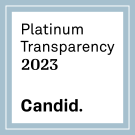Increase Housing Choices through Policy Choices
This past legislative session set the dominoes in motion to make significant changes at the local level in addressing the housing crises in WA state. Housing is a complex issue with many variables, challenges, and variables, so our approach to solutions needs to be dynamic and strategic. HB 1923 is a tool in that approach because it incentivizes cities to act now, act strategically, and act to create more housing choices.
How it works?
HB 1923’s goal is to increase housing options and policies by incentivizing cities to either adopt policies or create housing strategy plans. The state is offering cities grants up to $100,000 if they do one of the following two options.
Option 1:
Choose to adopt at least two of the below policy actions.
- Upzoning areas of at least 500 acres that include a commuter or light rail station
- Why? Increased development near transit both is environmentally conscious as it decreases the number of people driving, it also alleviates the cost burden of car transportation which is the second highest financial strain on low-income families. Transit-oriented development is most impactful when it’s equitable transit oriented development and includes affordable housing!
- Upzoning areas of two hundred and fifty acres or more that include bus rapid transit (only applied to
cities with a population of forty thousand or more residents) - Authorization of duplexes, triplexes, and courtyard apartments in single-family zoned areas
- Why? With the majority of most King County cities being primarily zoned for single-family homes, allowing increased housing options allows for more neighbors without changing the nature of the neighborhood.
- Authorization of accessory dwelling units (ADUs) insingle-family zones areas on lots that meet size requirements
- Adoption of a subarea plan or a detailed plan for a smaller geographic area within a city
- Implementation of planned action, some examples include a comprehensive plan, master
planned development, or phased project - Adoption of increases in categorical exemptions that encourage urban infill development
- Adoption of a form-based code which includes zoning requirements based on physical form
rather than building use - Authorization of duplexes on each corner lot within all single-family zoned areas
- Allowances for subdividing lots into smaller parcels
Option 2:
Cities can instead choose to implement a housing action plan. The plan must encourage construction of additional affordable and market rate housing in a greater variety of housing types and at prices that are accessible to all income levels. The plan must also include a risk of displacement analysis. As part of the requirement, the cities must do extensive community outreach and engagement in creation of their housing action plan.
There’s more…
If we are going to encourage cities to run forward with housing development, we need to reduce barriers to these solutions. HB 1923 reduces development barriers, decreases costs, and increases access to data by:
Reducing parking requirements
Increasing Permanent Supportive Housing Protections
Funding Housing Supply and Affordability Report by University of WA
How will it impact?
By choosing either of these options, cities are committing to being strategic and intentional with increasing housing options in their communities. We need more housing in WA across the income spectrum and we need more neighbors in every community. This legislation puts us on the road to doing that by creating incentives for cities to act and act now.
What can you do?
Engage with HDC as we work with cities to encourage them to take advantage of this opportunity! We will be sending letters to each jurisdiction encouraging them to adopt one of the two options that works best for them. We will need advocates to join us going forward as we advocate at City Council meetings and set up meeting with individual elected leaders. Reach out if you’d like to get involved.


